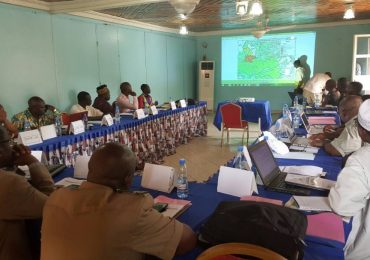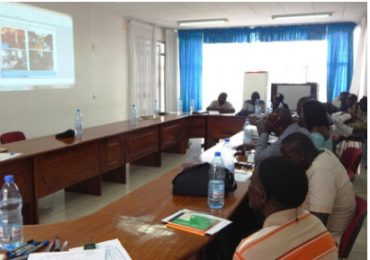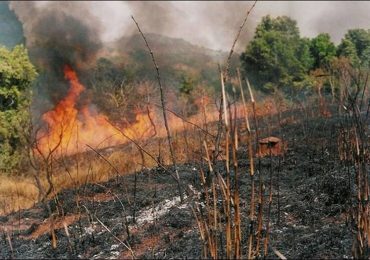By Tsala Tsala Emile*
The United Nations Framework Convention on Climate Change (UNCCC) was prepared and adopted on May 9, 1992 in New York, USA, before the holding of the Earth Summit in Brazil (Rio de Janeiro).
During the conference, UNCCC was opened to signatories for signing on June 13, 1992. Two years later (March 21, 1994) the UNCCC was adopted almost worldwide into force.
The objectives of the convention amongst others are the limitation of the release into atmosphere of greenhouse gases; the development and sharing of technologies and rational ecological know-how; the education/training of the general public in the climate change domain.
In a nutshell, the ultimate objective of the UNCCC is to stabilize concentrations of greenhouse gases in the atmosphere at a level that would prevent anthropic harmful interference with climatic system.
After the United Nations Conference on Environment on the one hand, and the United Nations Conference on Environment and Development or the Rio de Janeiro Conference on the other hand, Cameroon ratified on October 19, 1994 the United Nations Framework Convention on Climate Change that came into effect on January 17, 1995.
By this ratification, Cameroon, alongside the International Community, committed herself to stabilizing concentrations of greenhouse gases at a level that would prevent anthropic harmful interference with climatic system.
By adhering to the Convention, the Cameroon also committed its political will alongside the reforms undertaken to prevent the harmful effects of climate change. This commitment gave Cameroon the impetus to firmly push all the proposed reforms related to the convention’s implementation.
Since environmental protection is a national concern recognized by the 1996 Cameroon’s Constitution in its preamble, from the period the UNCCC was ratified and came into force till now, Cameroon has undertaken a lot of measures and has put in place national, and international strategies to implement the said convention.
In the international arena, Cameroon adhered to the KYOTO Protocol in July 2002 whose main purpose is to implement the United Nations Convention on Climate Change.
At the national level, legal and institutional actions were taken to bring realize the implementation. Amongst these actions is the adoption of the law n° 96/12 of August 5, 1996 representing the framework law relating to the management of environment in Cameroon. This law constitutes the framework of standardization and the bedrock of Cameroon environmental policies and the measures taken to reduce emission of greenhouse gases included; the elaboration in 1996 of the National Plan for Environment Management.
This plan was revised and updated in 2011. After presenting the real state of environment in Cameroon, the plan aims to define the current state of environment management in the country. For the sector where a lot needs to be done, it proposed adequate measures.
The creation of the Ministry of Environment and Protection of Nature in 2005 and its transformation by decree in 2011 into Ministry of Environment, Protection of Nature and Sustainable Development (MINEPDED) with mission is to elaborate, implement and assess government environmental policy from a sustainable development prospect.
The creation by Presidential decree N°2009/410 of the December 10, 2009 of the National Observatory on Climate Change (NOCC) whose mission is to follow up and assess the environmental and socio-economic impacts of forecasting, mitigating and/or adaptation measures of adverse effects and risks linked to climate change. But it should be noted that the observatory is not yet functional.
One of MINEPDED’s missions is to negotiate international conventions and agreements relating to the protection of environment and their implementation alongside the Ministry of External Relations. From that point on, it is obvious that MINEPDED is in charge of the implementation of the UNCCC.
MINEPDED has undertaken many actions since the ratification and the coming into force of the convention:
– The elaboration in 2001 of the First National Communication Strategy on Climate Change. It is a framework combining communication means capable of provoking necessary change in terms of skills, opinions, attitudes, believes or behaviors at the level of targeted population in order to solve climate change problems within a timeframe.
– The adoption in 2009 of long term aggressive vision on climate change – to elaborate and commit the implementation of an ambitious policy for preserving environment and fight against adverse effects of climate change.
– The elaboration in 2011 of the Second National Communication Strategy on Climate Change.This strategy has, as the first, the same aim;
– The development of Integrated and Global Approaches Programmefor Adaptation on Climate Change since 2008. The programme is the Cameroon component of COOL EARTH PARTNERSHIP funded by Japan. The objective of the programme is to strengthen national capabilities for adaptation on climate change at systemic, institutional and individual levels in order to reduce adverse effects of climate change on natural environment, man, economy and development included;
– The elaboration of a National Plan for Adaptation on Climate Change to guide all the initiatives of fight against climate change by providing practical tools to stakeholders. Those tools take into account the climatic challenges of each agro-ecological zone of Cameroon;
– The REDD+ Initiative whose implementation is ongoing. REDD (reduction of emission due to deforestation and forest degradation) is meant to contribute to the mitigation of climate change by reducing deforestation and forest degradation and by promoting forest conservation;
– The partnership agreement signed between MINEPDED and HYSACAM for waste management. This partnership underscores the recognition of MINEPDED to HYSACAM for all the actions undertaken for the fight against climate change.
All those policies, strategies, plans and programmes undertaken at the level of the central administration are implemented on the field by Regional and Divisional services of the Ministry. These latter carried out many activities relating to the fight against climate change and by extension to the implementation of the United Nations Framework Convention on Climate Change.
The areas in which the services of the Ministry of Environment, Protection of Nature and Sustainable Development of the South West are engaged, comprise of sensitization of women on the fight against climate change and the sustainable use of natural resources; the celebration of environmental days in the course of which people are sensitized on environmental issues the climate change included; the planting of trees during environmental days celebrations and green cities operation; the carrying out of permanent environmental inspections and controls to make sure that activities carried out by industries and other economic operators are environmentally friendly; the promotion of sustainable development by being sure that each industrial, economic, social and cultural project carried out in the south west region is environmentally compliant.
Now, due to the fact that the protection of environment and the fight against climate became a nationwide concern, international and national partners of MINEPDED are also carrying out various activities to reduce the rate of greenhouse gases released in the atmosphere. All these actions put together show how MINEPDED is struggling to implement the UNCCC.
The Ministry is conscious that a lot needs to be done in order to curb effectively climate change, a great threat for humankind.
*Environment Expert PReCESSE/MINEPDED-SW









